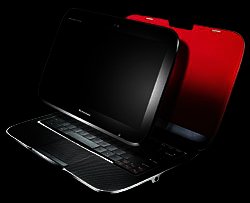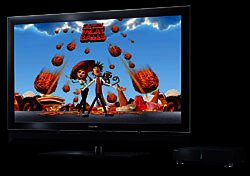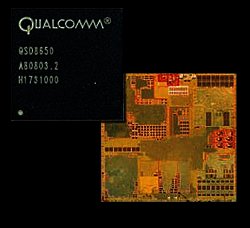CES Magnifique
By Mike Joubert 1 February 2010 | Categories: feature articles| >> 3D TVs | |||
|
|
|||
| >> Slate PCs | |||
 One of the biggest trends for 2010 at CES doesn’t involve notebooks or even netbooks, but rather the often berated tablet PC. Rumours of an Apple tablet device, said to be called the iSlate, loomed large over the exhibition, and although Apple didn’t attend CES, the word “slate” seems to have stuck, with it being adopted to refer to this breed of tablet devices. One of the biggest trends for 2010 at CES doesn’t involve notebooks or even netbooks, but rather the often berated tablet PC. Rumours of an Apple tablet device, said to be called the iSlate, loomed large over the exhibition, and although Apple didn’t attend CES, the word “slate” seems to have stuck, with it being adopted to refer to this breed of tablet devices.HP was first out the blocks to release such a device with an endorsement from none other than Microsoft CEO Steve Balmer, showcasing the HP Slate tablet in his keynote address. The Slate sports Windows 7 and seems to be an internet connected device lying somewhere between an ereader and a netbook. The least amount of information possible (or so it would seem) has been released about the Slate, with HP likely waiting to see what’s coming from Apple before divulging details. But we do know that it will be touch driven and will be released later this year, although we could not get conformation from HP SA if the device will be made available in SA. Top honours though goes to the sleek IdeaPad U1 hybrid tablet presented by Lenovo. This two-in-one device is a netbook in essence, with the amazing ability to clip off the screen to use it as a slate device. If that’s not cool enough, it actually sports two different operating systems and two processors. In its netbook form it runs on an Intel Core 2 Duo processor and Windows 7 Home Premium, when unclipped it is powered by Qualcomm’s 1 GHz Snapdragon processor (see below) operating in a Linux environment. To make it switch and sync seamlessly between the different systems Lenovo employs what they call Hybrid Switch Technology. The yummy U1 with its 11.6" multitouch LED screen weighs only 1.6 kg (1 kg unclipped) and sports 3G integrated broadband. It is said to have 128 GB of SSD storage space in netbook form and 16 GB SSD in slate form. You will pay a premium for such privileges though, with the U1 expected to go for $999 in the US with its release scheduled for June this year. |
|||
| >> Qualcomm’s Snapdragon processor | |||
|
Snapdragons can also be found in Acer’s first Android phone the A1 Liquid, one of HP’s new netbooks, and, although not present at CES, in Google’s newly announced Nexus One smartphone. Qualcomm’s competition in the form of rival Intel’s Moorestown processor, only featured in LG’s GW990 phone. With Apple rumoured to adopt Qualcomm processors in the next iPhones, the future couldn’t look brighter for the San Diego based company. |
|||
Most Read Articles

Have Your Say
What new tech or developments are you most anticipating this year?


 The 42" full HD LCD TV you just invested in is so two thousand and late. 3D is the new kid on the block, with 3D TV sets on display at every major television manufacturer’s stand. 3D does contain some inherent hurdles to mass adoption, not the least of which is the cost involved. Special 3D content is required, while you also need special 3D glasses to view content. But CES showed that problems are made for solving.
The 42" full HD LCD TV you just invested in is so two thousand and late. 3D is the new kid on the block, with 3D TV sets on display at every major television manufacturer’s stand. 3D does contain some inherent hurdles to mass adoption, not the least of which is the cost involved. Special 3D content is required, while you also need special 3D glasses to view content. But CES showed that problems are made for solving.  One of the big winners at CES 2010 was mobile chip maker Qualcomm. Their speedy Snapdragon processors seem to have wormed their way into some of the hottest gadgets on display.
One of the big winners at CES 2010 was mobile chip maker Qualcomm. Their speedy Snapdragon processors seem to have wormed their way into some of the hottest gadgets on display.